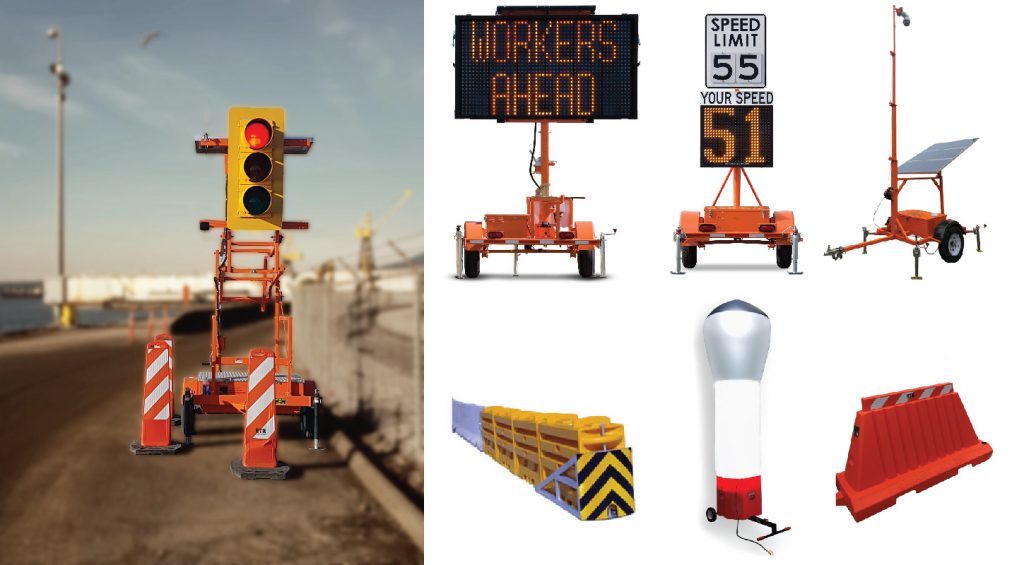Automated Flagger Assistance Devices (AFAD Traffic Safety) offer a proven way to keep workers safe and traffic flowing smoothly through work zones. By replacing traditional human flaggers in high-risk areas, AFADs reduce worker exposure to live traffic, cut labor costs, and maintain clear, consistent traffic control. At Safety Network Inc., we provide a range of MUTCD-compliant AFAD systems, expert installation, and ongoing support to ensure your next project runs safely and efficiently.

1. What Are AFADs and Why They Matter
AFAD Defined: An AFAD is a remotely controlled device that uses signals, gates, or lights to direct traffic through alternating lanes. Instead of standing in the road, flaggers operate the system from a protected location.
- Worker Safety: First and foremost, AFADs remove flaggers from direct exposure to moving vehicles. According to OSHA guidelines, this reduction in roadside exposure significantly cuts the risk of flagger injuries or fatalities.
- Traffic Flow: Moreover, AFADs provide consistent signal timing—avoiding human error in holding flags too long or too short. As a result, drivers receive clear, predictable instructions that reduce confusion and crashes.
- Cost Efficiency: Finally, since one technician can manage multiple AFADs remotely, you save on labor without sacrificing control quality.
2. Key Benefits of AFAD Systems
A. Enhanced Worker Protection
By locating operators behind concrete barriers or off the roadway, AFADs comply with OSHA 1926.200 requirements for flagger protection. This setup lowers injury risk and meets safety regulations.
B. Consistent Signal Operation
AFADs use traffic-actuated sensors or pre-set timing to switch signals. Consequently, traffic moves smoothly without sudden stops or starts that human flaggers might cause.
C. Multi-Site Management
One trained technician can oversee several AFADs via radio control. Therefore, you need fewer staff on site, freeing them for other tasks and reducing personnel costs.
D. Improved Driver Compliance
Drivers recognize standardized, high-intensity LED signals more readily than hand flags. Thus, they respond faster and more predictably, which improves overall work-zone safety.
3. AFAD System Options We Offer
A. Portable, Stand-Alone Units
- Features: Lightweight frames, lithium-ion batteries, solar panels, and traffic actuation sensors.
- Use Case: Ideal for short-term lane closures on local streets or low-volume roads.
B. Trailer-Mounted Systems
- Features: Heavy-duty chassis, larger solar arrays, and dual-direction signal heads.
- Use Case: Best for multi-week projects on highways and arterial roads.
C. Networked AFAD Clusters
- Features: Central control panel that links up to 10 AFADs via encrypted radio.
- Use Case: Large projects requiring synchronized traffic control over multiple intersections or work areas.
4. Installation & Operator Training
Step-by-Step Installation:
- Site Assessment: We inspect road width, sight distances, and signal placement per MUTCD Section 6D.
- Equipment Setup: Then, our certified technicians position AFAD units, install sensors, and configure radio links.
- System Testing: Next, we run full system tests to confirm signal timing and remote-control range.
Operator Training:
- Hands-On Sessions: We train your staff in safe AFAD operation, emergency procedures, and basic troubleshooting.
- Certification: Upon completion, operators receive a certificate of competency—ensuring compliance with company policies and regulatory standards.
5. Maintenance & Support
A. Preventive Maintenance
- Quarterly Inspections: We check batteries, solar panels, and signal optics.
- Firmware Updates: As technology evolves, we push OTA updates to improve performance and security.
B. Emergency Repairs
- 24/7 Hotline: In case of damage or malfunction, our rapid-response team dispatches repair crews within hours.
- Loaner Units: To avoid downtime, we provide temporary AFADs while we service your equipment.
6. Compliance & Regulatory Alignment
Safety Network Inc. ensures every AFAD system meets or exceeds:
- MUTCD Part 6D: Standards for Temporary Traffic Control Devices.
- OSHA 1926.200: Requirements for flagger and work-zone safety.
- Caltrans Specifications: For projects in California, including ATSSA guidelines for device placement and operation.
We also assist with permit applications by supplying detailed traffic-control plans and equipment spec sheets.
Frequently Asked Questions (FAQs)
Q: Can one operator manage multiple AFADs at once?
A: Yes. Our networked systems let a single controller handle up to 10 AFADs, enabling efficient multi-site traffic control.
Q: How long do the batteries last?
A: With solar recharge, battery life extends beyond 14 days, even under heavy use. We recommend a monthly visual check.
Q: Are AFADs suitable for all weather conditions?
A: Absolutely. Our units are IP67-rated for dust and water resistance. LED signals remain bright in rain, fog, or snow.
Q: How do we choose the right system for our project?
A: Contact us for a free site assessment. We’ll recommend stand-alone, trailer-mounted, or networked solutions based on traffic volume, project duration, and road type.
Q: What training is required for AFAD operators?
A: Operators must complete our half-day hands-on course covering setup, safe operation, and emergency protocols. Certification is provided upon course completion.
Conclusion
Automated Flagger Assistance Devices transform work-zone safety by reducing flagger exposure, improving traffic flow, and cutting costs. At Safety Network Inc., our EEAT-driven approach, certified equipment, and full lifecycle support help you deploy AFADs with confidence—ensuring safer work zones and smoother projects.
Safety Network Inc.:
- Website: safetynetworkinc.com
- Contact Us: Use the form on our site to request more information or a quote.

